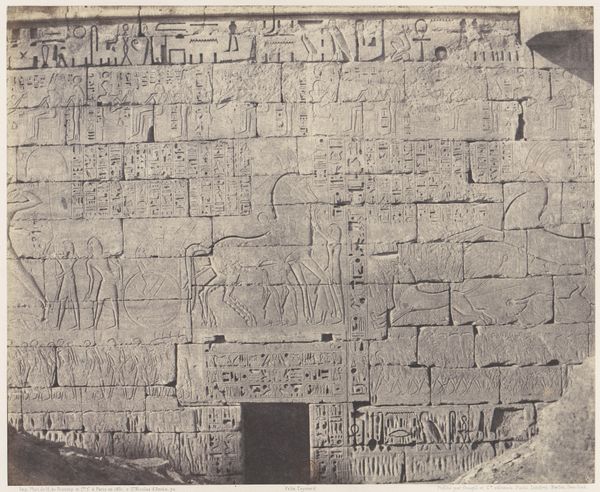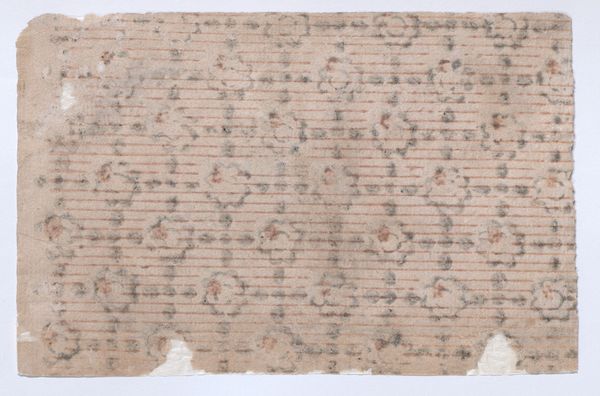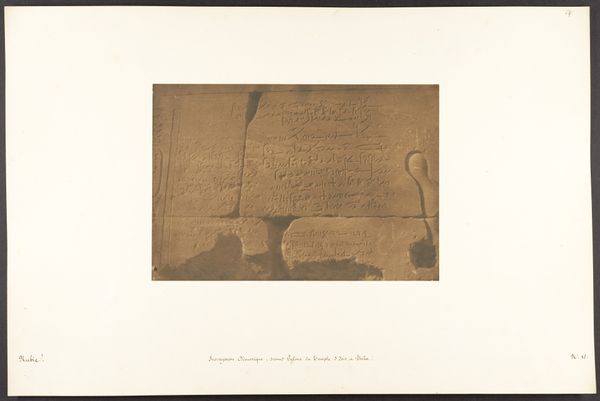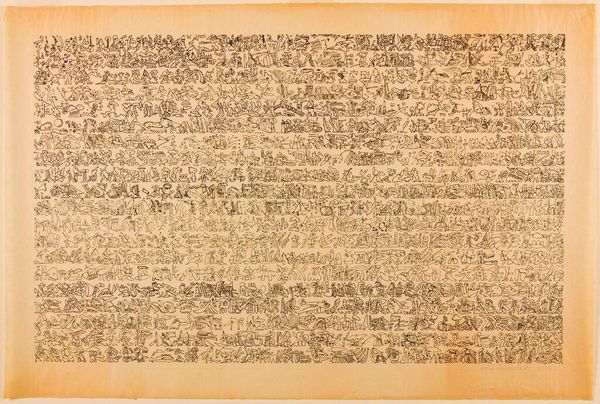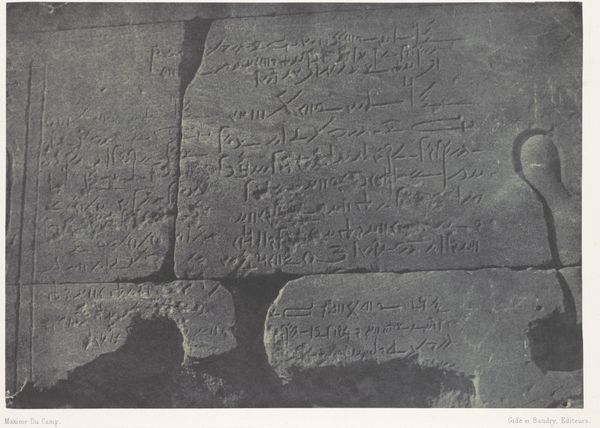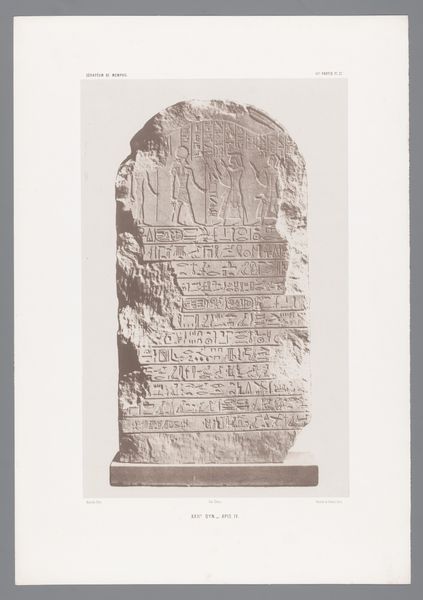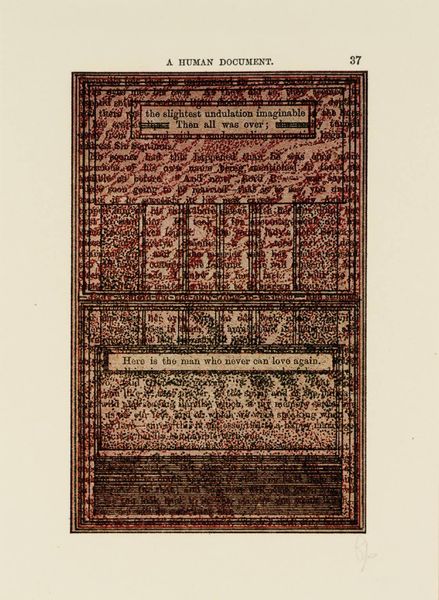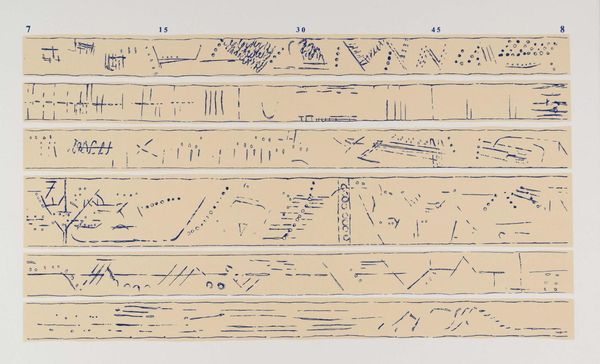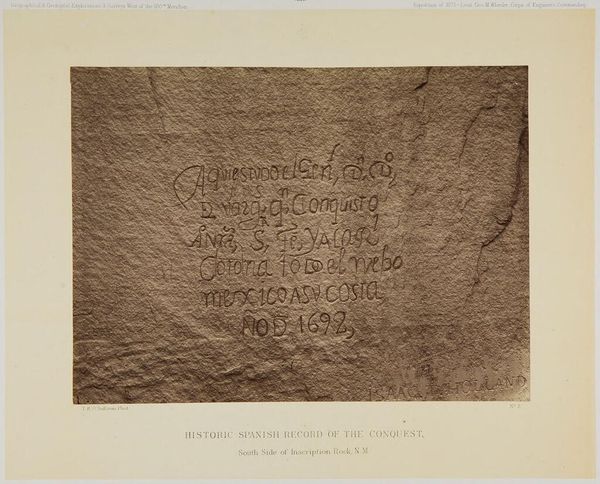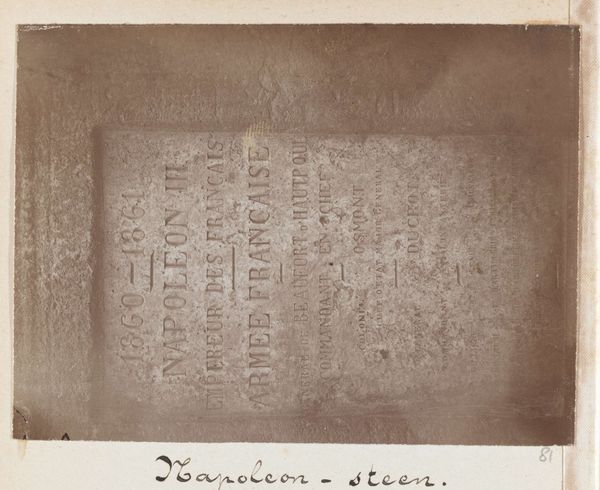
#
shading
#
pencil drawn
#
amateur sketch
#
toned paper
#
hand written
#
pencil sketch
#
old engraving style
#
hand drawn type
#
hand-written
#
pencil drawing
Dimensions: image/sheet: 16.6 × 23.2 cm (6 9/16 × 9 1/8 in.) mount: 33.1 × 45.1 cm (13 1/16 × 17 3/4 in.)
Copyright: National Gallery of Art: CC0 1.0
Curator: Right, let's dive in. We're looking at "Elliot Marbles" by Linnaeus Tripe, created around 1859. It seems to be a photograph of some kind of inscribed stone. What's your first impression? Editor: My first impression is texture. I mean, look at the stone itself! It feels aged, almost like parchment, the lettering an organic part of it. There’s something melancholic about seeing ancient scripts rendered so starkly, like a message floating through time, just barely clinging to visibility. Curator: It’s a fantastic study in contrasts actually. Tripe uses light and shadow to define these chiseled characters against the rough-hewn surface, and also to create that sensation of a thing weathered and aged, so we read that temporal quality you noted. Do you get a sense of what those markings might mean? Editor: Well, beyond a gorgeous composition, as an activist, it always comes back to: whose story is being told here, and whose voices have been left unheard. Looking at that writing, the lines so deliberately carved… I can’t help but think about the labor involved in creating such an artifact and also, the sociopolitical structures that led to its creation. What did it mean for someone to immortalize their words in this way? Who held the power of the pen, or in this case, the chisel? Curator: Precisely. Considering Tripe was working in India at the time, commissioned by the British East India Company, it brings a specific perspective to his choice of subject. He documented these ruins meticulously, yes, but through a colonial lens. Was he fascinated by a lost culture, or was he merely cataloging spoils? Editor: It’s that tightrope walk, isn’t it? On the one hand, these images allow us to bear witness, to have conversations about legacies and power dynamics; but on the other, photography, from its beginnings, has been bound up with objectification and control. And how do we contend with these layers when looking at what is beautiful and thought provoking in the process of preservation? Curator: You bring up such a potent point. This image, then, becomes a provocation rather than just a document. Its stillness holds so much potential energy, and as we look closely, our awareness can transform that frozen moment into an impetus to question our place in that continued telling and retelling. Editor: Absolutely. Seeing Tripe's photograph prompts me to consider that legacy but it is more a beginning than an end. This isn’t just about gazing back, it’s about seeing how the echoes of those pasts reverberate now, pushing us toward a future that critically engages with representation, history, and the enduring quest for understanding.
Comments
No comments
Be the first to comment and join the conversation on the ultimate creative platform.
